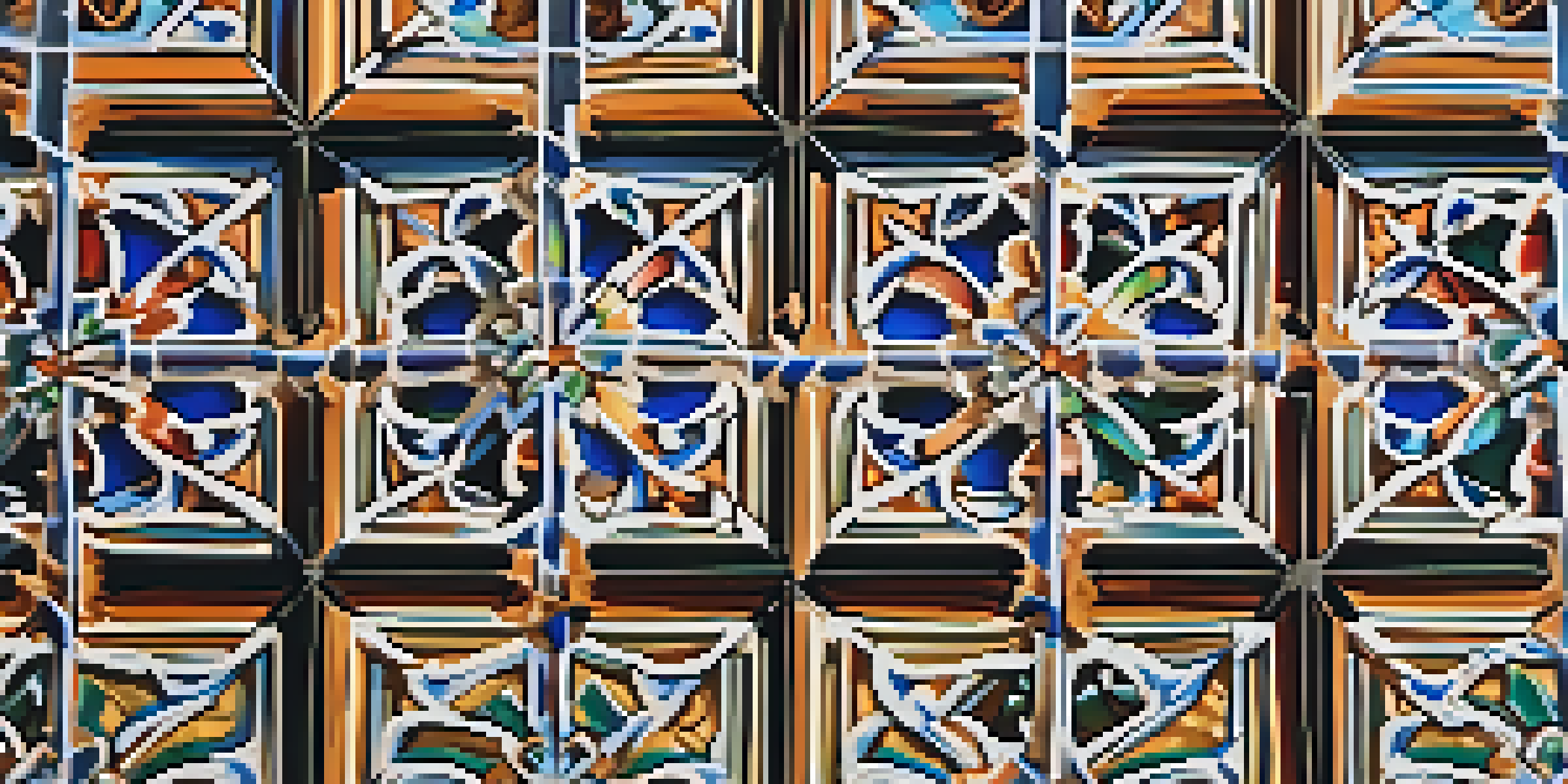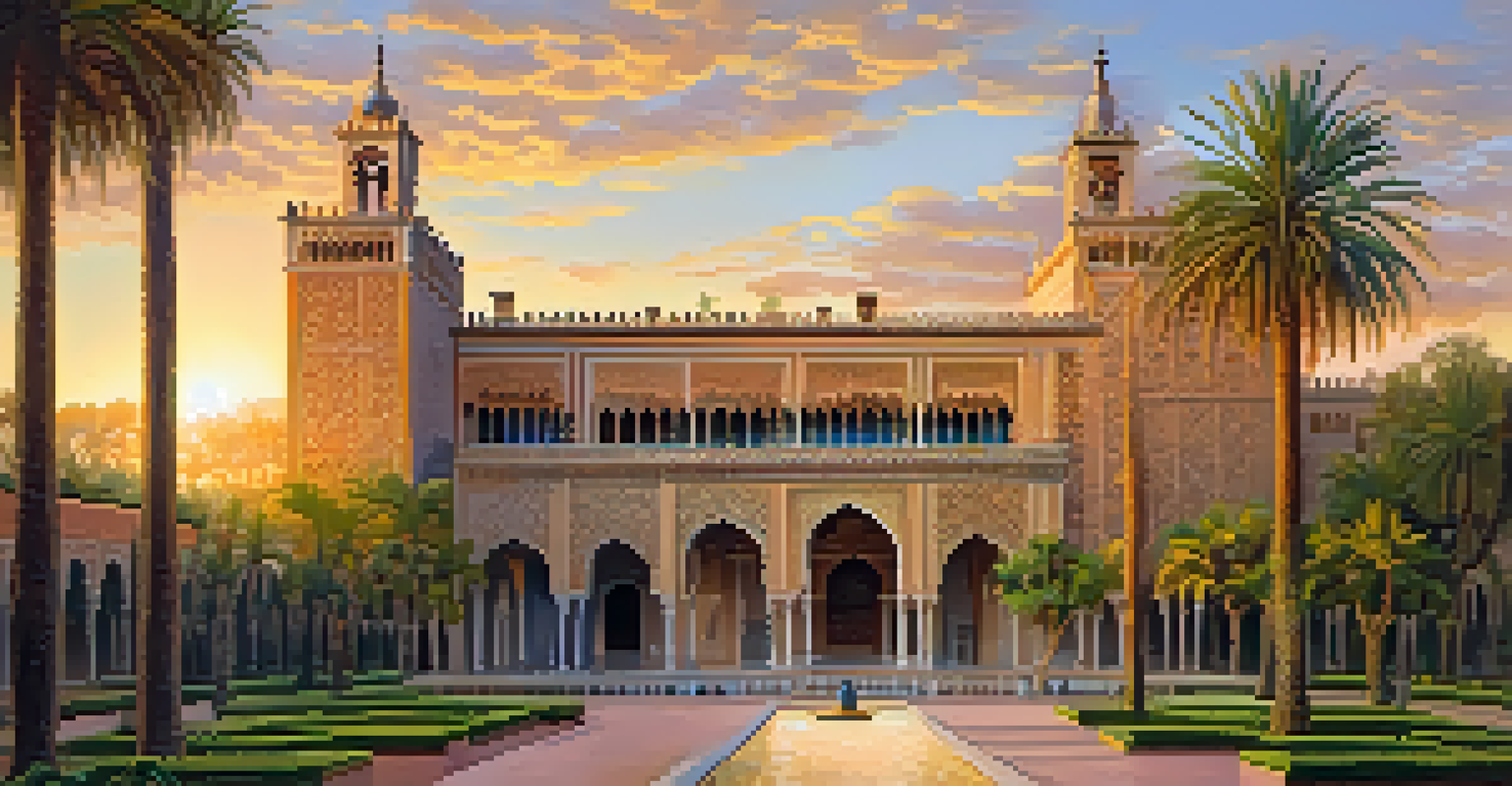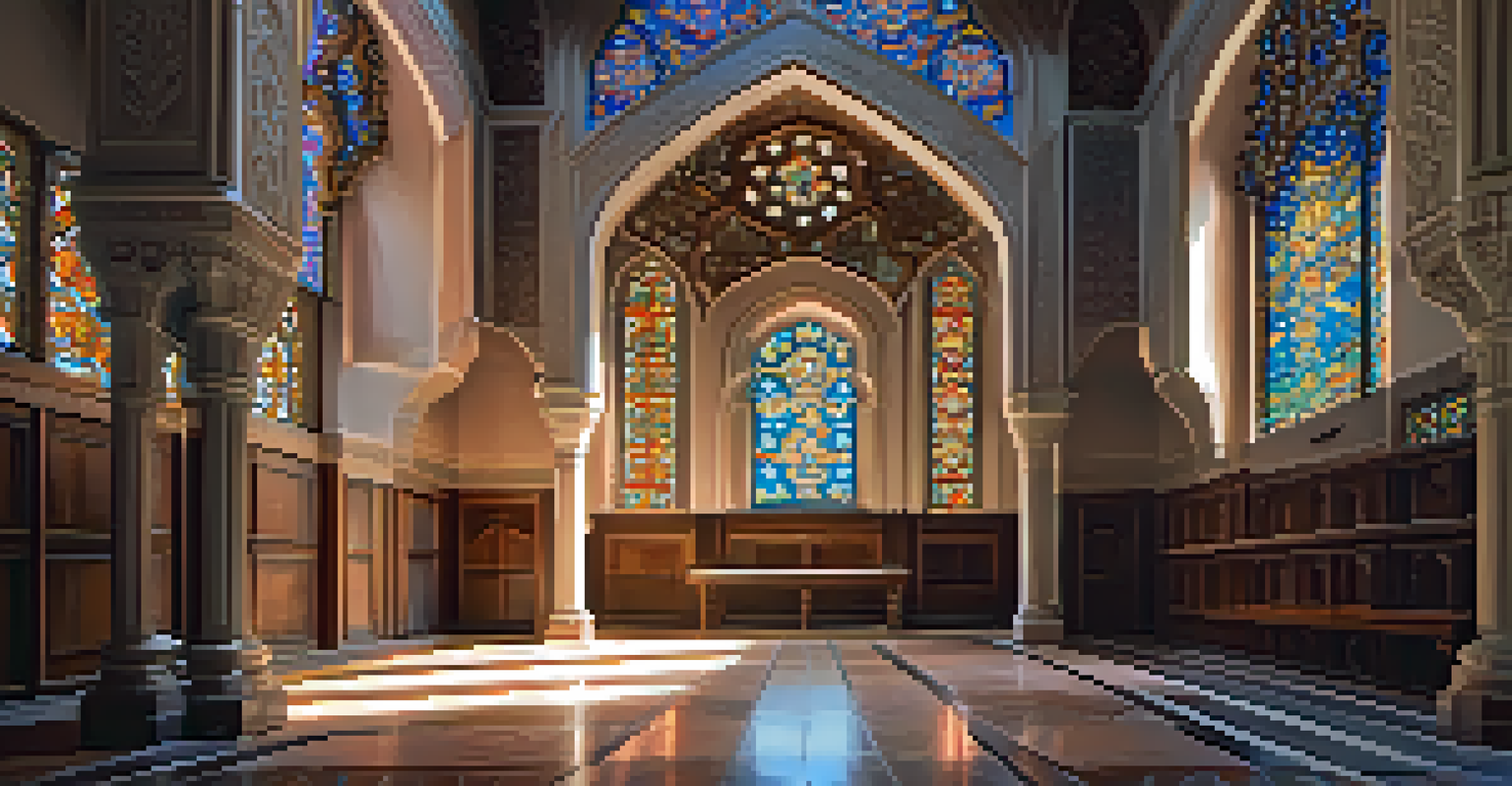Mudejar Style: The Fusion of Christian and Islamic Art

Understanding Mudejar Style: A Cultural Fusion
Mudejar style is a unique artistic expression that emerged in medieval Spain, combining elements of Islamic and Christian art. It originated during the Reconquista, a period when Christian kingdoms gradually reclaimed territory from Muslim rule. The term 'Mudejar' refers to Muslims who remained in Spain after the Reconquista, contributing their artistic skills to the local culture.
Art is the most beautiful of all lies.
This style is characterized by intricate tile work, ornate wood carvings, and stunning brick architecture, showcasing how two distinct cultures can harmoniously blend. For example, the use of geometric patterns and calligraphy often seen in Islamic art complements the Gothic and Renaissance styles of Christian architecture. Together, they create a visual narrative that tells the story of coexistence.
Mudejar art not only reflects the aesthetic preferences of the time but also serves as a testament to the cultural exchanges between different communities. It invites us to appreciate the beauty of diversity and the potential for creative collaboration, reminding us that art can transcend boundaries.
Key Characteristics of Mudejar Architecture
Mudejar architecture stands out for its unique details that embody both Islamic and Christian influences. One of the key features is the use of brick, which was often employed in a way that mimicked the elaborate stonework typical of Gothic cathedrals. This clever adaptation showcases the artistry of Mudejar craftsmen who utilized local materials to create magnificent structures.

Another hallmark of Mudejar architecture is the application of colorful tiles, known as azulejos. These tiles are often arranged in intricate patterns and designs that evoke a sense of rhythm and movement. This vibrant use of color brings buildings to life, making them visually stunning while also serving a practical purpose in reflecting light and cooling interiors.
Mudejar Style: A Cultural Fusion
Mudejar style is a unique blend of Islamic and Christian art that emerged in medieval Spain during the Reconquista.
Additionally, Mudejar structures frequently include horseshoe arches and decorative plasterwork, which are rooted in Islamic design. This blend of elements creates a unique architectural language that speaks to the rich history of Spain, inviting visitors to explore its cultural heritage through its buildings.
Famous Examples of Mudejar Art and Architecture
One of the most iconic examples of Mudejar architecture is the Alcázar of Seville, a stunning royal palace that showcases intricate tile work and ornate plaster decoration. Originally a Moorish fort, it represents the epitome of Mudejar style, where Islamic designs seamlessly merge with Christian elements. Visitors can easily spend hours admiring the detail and craftsmanship that went into its creation.
Diversity is not a reason for conflict. It is a reason for celebration.
Another significant example is the Tower of the Church of San Bartolomé in the town of Sigüenza. This tower features brickwork typical of Mudejar style, along with striking geometric patterns. It serves as a reminder of how local artisans preserved their heritage while adapting to new cultural influences, creating something truly unique.
The Mudéjar-style bell tower of the Cathedral of Santa María in Teruel also stands out as a masterpiece of this artistic movement. Its vibrant colors, intricate brickwork, and ornate detailing reflect the rich tapestry of influences that define Mudejar art. Each of these examples tells a story not just of architectural prowess, but of a shared history.
The Influence of Mudejar Style on Spanish Culture
Mudejar style has had a lasting impact on Spanish culture, particularly in the fields of architecture and decorative arts. Its influence can be seen in various structures across Spain, where the fusion of styles became a hallmark of the country's architectural identity. As a result, Mudejar art continues to inspire contemporary artists and architects, keeping its legacy alive.
In addition to architecture, Mudejar design principles have influenced ceramics, textiles, and other decorative arts. The intricate patterns and vibrant colors characteristic of Mudejar style can be found in traditional Spanish crafts, showcasing the continuous thread of cultural exchange. This reflects the enduring appreciation for the beauty of diversity in Spanish art.
Key Features of Mudejar Architecture
Mudejar architecture is distinguished by its use of brick, colorful tiles, and decorative elements that reflect both Islamic and Christian influences.
Moreover, the Mudejar style serves as a reminder of Spain's complex history, highlighting the coexistence of different cultures. As artists and artisans draw inspiration from this rich heritage, they contribute to a broader understanding of cultural identity and the importance of preserving history through art.
The Role of Mudejar Art in Modern Times
In today's world, Mudejar art remains a significant touchstone for artists and historians alike. Its unique blend of styles offers a compelling narrative about cultural coexistence that resonates with contemporary audiences. Many modern artists draw upon Mudejar motifs and techniques, infusing traditional elements into contemporary works, thus keeping this art form relevant.
Furthermore, as globalization continues to connect diverse cultures, the themes found in Mudejar art become increasingly important. The style symbolizes how different communities can collaborate creatively, fostering a sense of unity and appreciation for diversity. This message is particularly valuable in a world still grappling with cultural differences.
Exhibitions and cultural events celebrating Mudejar art have gained popularity, attracting visitors eager to learn about this rich heritage. By showcasing the beauty and significance of Mudejar design, we not only honor the past but also inspire future generations to explore the potential of cultural fusion in their own artistic endeavors.
Mudejar Art and Its Spiritual Significance
Mudejar art often carries spiritual significance, reflecting the beliefs and practices of both Christian and Islamic traditions. The intricate designs and patterns found in Mudejar architecture are not just decorative; they also serve a spiritual purpose, aiming to evoke a sense of wonder and connection to the divine. This melding of beliefs creates spaces that invite contemplation and reflection.
For instance, the use of light in Mudejar buildings is carefully planned to create atmospheres conducive to worship. Whether through the use of stained glass or strategically placed windows, light plays a crucial role in enhancing the spiritual experience. This thoughtful consideration of light and space underscores the importance of the artistic vision in creating sacred environments.
Preservation of Mudejar Heritage
Preserving Mudejar art is essential for honoring the shared histories and cultural diversity it represents, especially in the face of modern threats.
Moreover, the narrative of coexistence embodied in Mudejar art extends to its spiritual dimensions. It serves as a reminder that different faiths can share common values and aesthetics, fostering mutual respect and understanding. In an increasingly polarized world, Mudejar art stands as a testament to the beauty that can arise when diverse beliefs come together.
Preserving Mudejar Heritage for Future Generations
As we celebrate the beauty of Mudejar art, it is vital to prioritize its preservation for future generations. Many Mudejar structures face threats from urban development, environmental factors, and lack of funding for maintenance. Awareness campaigns and conservation efforts are essential in protecting these historical treasures, ensuring they continue to inspire people for years to come.
Educational programs that teach about the significance of Mudejar art can also play a crucial role in preservation. By instilling appreciation for this unique cultural heritage in young people, we cultivate a sense of stewardship that encourages them to advocate for its protection. Community involvement is key to ensuring that Mudejar art remains a vital part of Spain’s identity.

Ultimately, preserving Mudejar heritage is not just about safeguarding buildings; it’s about honoring the stories, traditions, and shared histories that they represent. By recognizing the value of these artistic expressions, we can promote a greater understanding of cultural diversity and foster a more inclusive society.